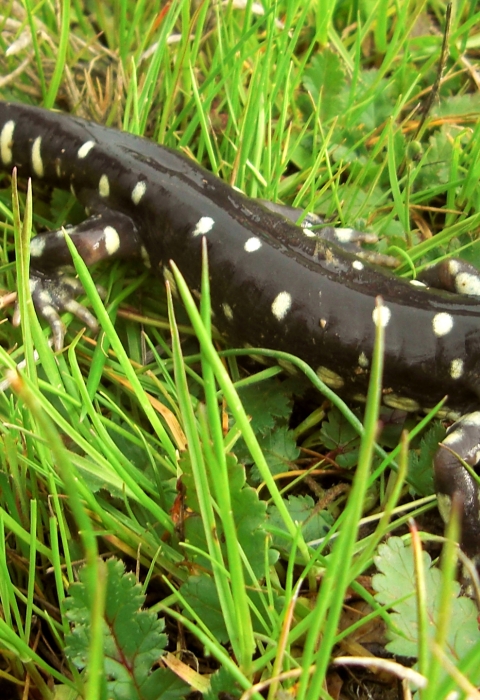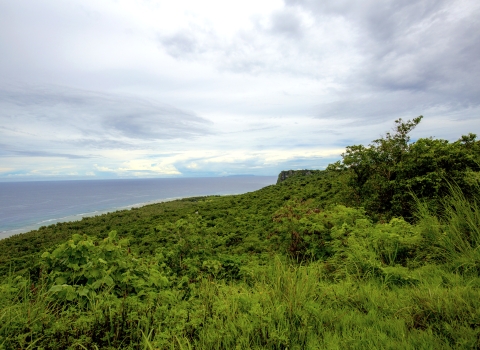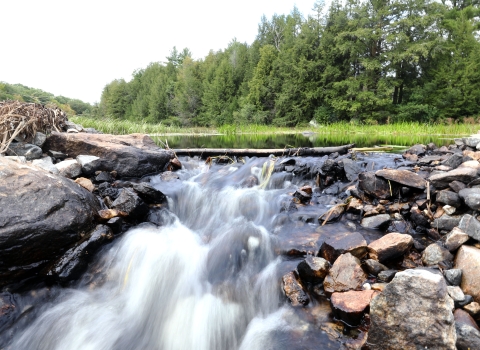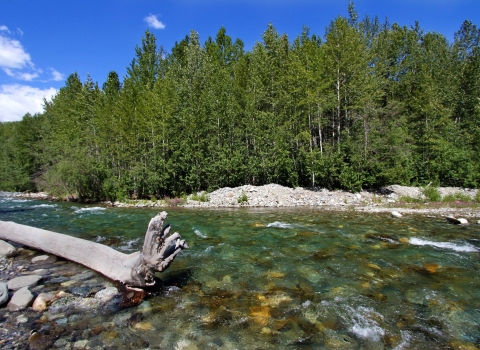In mid-March, Service biologists from the Sacramento Fish and Wildlife Office (SFWO) headed out to the Santa Rosa Plain with Dave Cook of the Sonoma County Water Agency to survey vernal pools for larvae of the endangered California tiger salamander (Sonoma distinct population segment). They used dip-nets to find the salamander larvae in the pools, but unfortunately, their findings were slim. Larvae were found in just one small pool.
“The survey’s results were sobering and in-line with the mega drought's unrelenting influence on vernal pool systems,” said John Cleckler, biologist in the SFWO’s Coast-Bay Division.
Vernal pools, which are seasonal wetlands that occur with winter rains, are critical breeding areas for tiger salamanders. The salamanders lay their eggs in shallow bodies of water like other amphibians. Loss of vernal pool habitat has contributed to the salamander’s decline.
“The pools will most likely dry before the larvae can transform into air breathing, terrestrial salamanders,” said Cleckler.
Cook has been monitoring salamander populations on the Santa Rosa Plain for close to 20 years. In addition to the Service, graduate students and volunteers from local environmental consulting agencies joined this year’s effort to understand the impact of California’s multi-year drought on salamander populations.
“This was a real eye-opener of the overall lack of water this year,” added Toby McBride, senior biologist in SFWO’s Conservation Banking Division. “We need more rain to fill the ponds. Salamanders are more likely to have breeding success in deeper ponds.”
Conservation of vernal pool ecosystems has been a special focus of the Service, with 20 threatened and endangered species and 13 species of concern tied to vernal pools in California and southern Oregon. You can explore the Service’s recovery plan for these species here.




